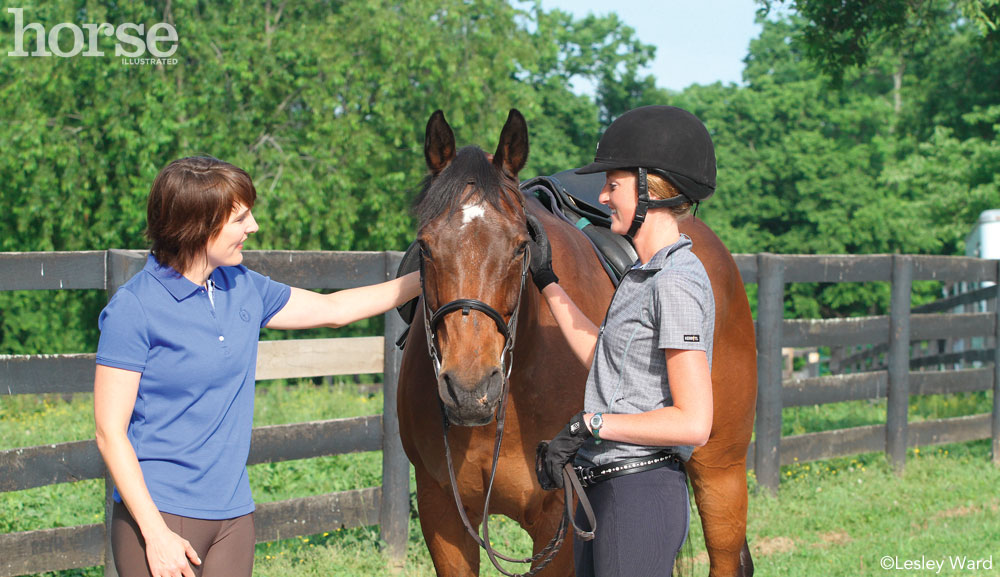Is anything more frustrating than selling a horse? Inevitably there are idiotic questions, garbled texts with poor spelling, and tire-kickers making lowball offers. Worst of all are the no-shows. However, there’s hope. If you’re a horse seller sick of casual window-shoppers wasting your time, try these tips.
Instead, post ads only where your target buyers congregate. If you’re selling a pony talented in games, send emails to local 4-H leaders, contact summer riding camps, and leave posters at fun shows. By zeroing in on your market, your ads will have more impact, and you’re less likely to have to wade through dumb emails. You can always resort to Craigslist later.

Sometimes it’s your own ad that causes time-wasting. Confused shoppers may send multiple emails asking for more information, or arrive at a showing expecting to see a very different horse than the one you’re selling. To avoid this, present all the details about your horse accurately. Don’t guess at a horse’s height, or the height you think he’ll grow to; actually measure him. Do state your asking price. Do describe, in detail, what his flaws and abilities are. Be realistic; if he can’t do a half-pass at a trot, don’t advertise him as being as a Third Level dressage mount. Be professional and consistent. Don’t price your horse sky-high and then use blurry pictures of him standing awkwardly in a muddy field. Use good grammar, and don’t make rookie mistakes like listing your horse as “15.5 hands.”
State up front whether or not you accept payment plans, sell to minors, will ship a horse, allow trial periods, or are interested in trades. For the least possible drama, say no to all of these. However, if you’re willing to be flexible, specifically state the conditions under which you might say “yes.” For example, “I may be interested in trading, but ONLY for a sound, gaited gelding with trail experience.”
Accuracy and detail are important, but you must also have good quality, recent pictures. Create an online portfolio for your horse. You can use free photo and video sharing websites like Imgur and YouTube. Rather than tediously emailing pictures to one potential buyer at a time, or wasting days showing your horse to looky-loos, you can simply put a link to your portfolio in your sale ads. Groom your horse as you would for a show, then take conformation photos as well as video of him moving under saddle and demonstrating the abilities your ad describes. That could include everything from tacking up quietly to skillful reining moves.
To cut down on the number of buyers just looking for a free Saturday afternoon ride, have a “two visit policy.” Explain that since you want the best match for both the customer and the horse, you really want them to get to know each other, so you don’t allow “test drives” until a second visit. Of course, this policy should be used judiciously—when you think you’re really dealing with window shoppers. Don’t make it hard for serious-minded buyers to test ride, especially if they’re driving long-distance to see a horse.
Want to eliminate no-shows? Consider offering to trailer the horse to the potential buyers’ farms, perhaps in exchange for a fee to cover your gas and time. This may be more inconvenient, but will eliminate no-shows and potentially expose the horse to other interested buyers at that farm.
The best anti-tire-kicker tactic of all may be getting to know a potential buyer through phone and email correspondence. Try to find out what kind of horse they need (maybe not the one they say they want), what their budget really is, and if they even have a place to board. Asking these kinds of questions will tell you whether someone is serious or not. Don’t be afraid to say, “I don’t think this is a good match” at any point.
If the prospect of selling your horse is overwhelming, consider consigning your horse through a reputable local trainer who has a lot of contacts in the horse world may be worth the cost and commission if you have a nice horse and are too crunched for time to keep him in work or show him to buyers. A pro can show the horse looking his best, and you’ll never have to answer questions like, “Does the horse get along with Rottweilers?”
This article originally appeared in the October 2015 issue of Horse Illustrated magazine. Click here to subscribe!





